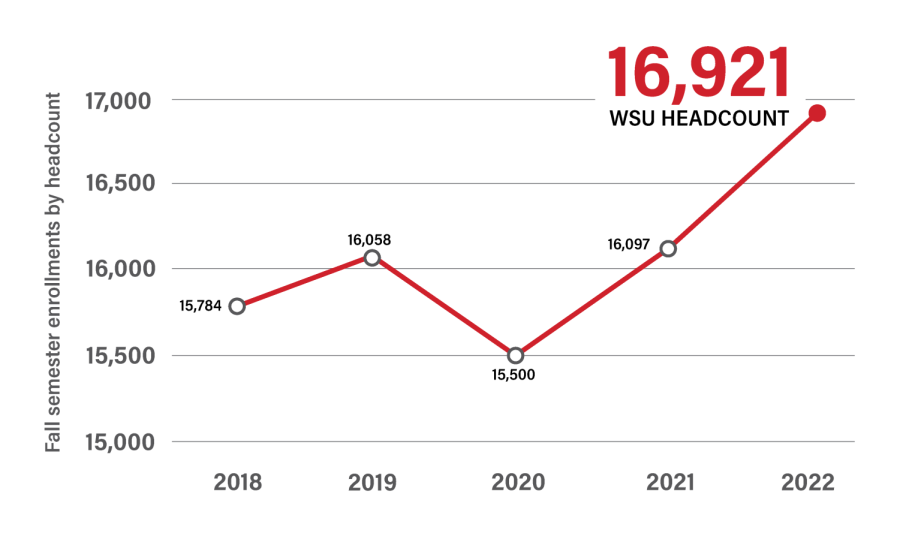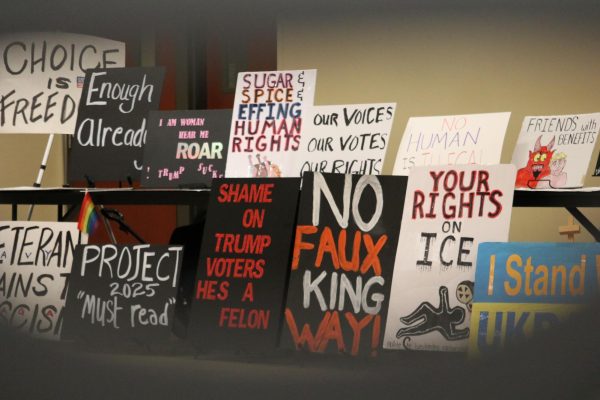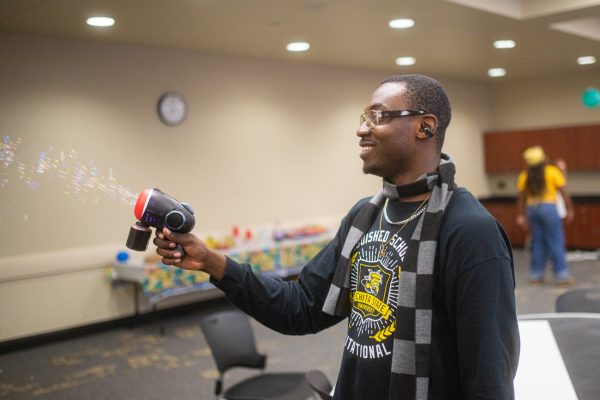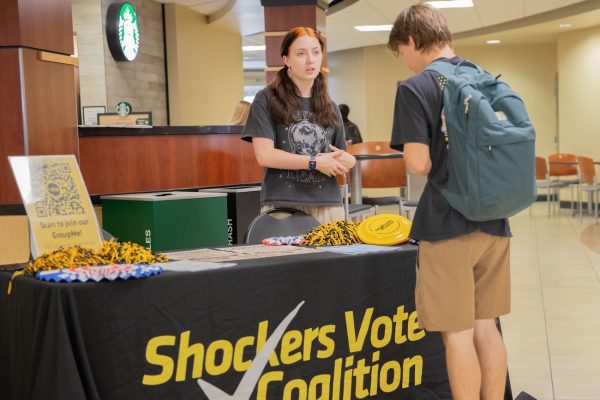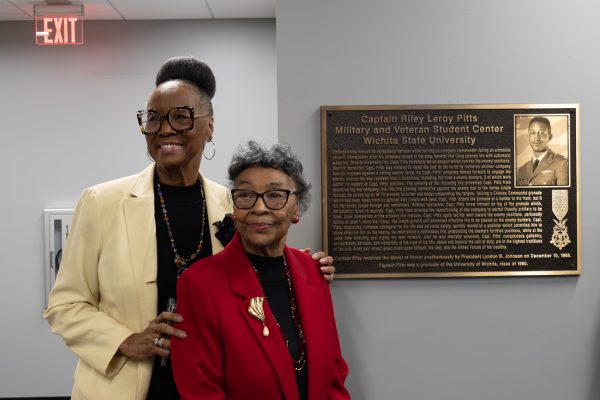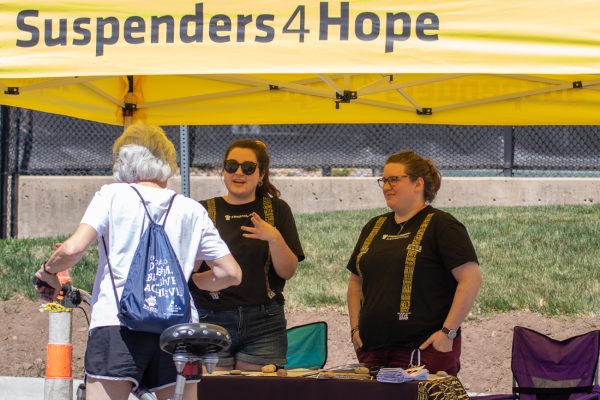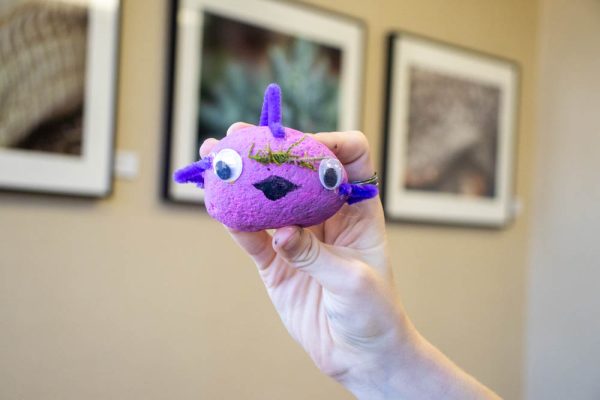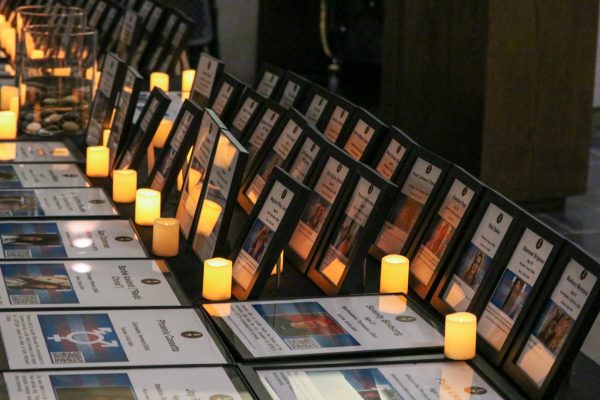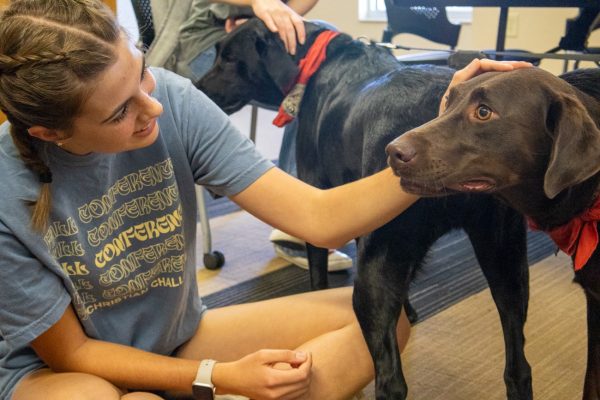‘Caught us off guard:’ Higher enrollment pushes student support systems to adapt
Wichita State University fall enrollments by headcount. This fall semester enrollment numbers have been it’s highest since 1989.
The university announced in October that it has seen the highest enrollment numbers since 1989. Some of the school’s officials say that this raises concerns about how student support systems plan to adapt to this change.
“Comparing my freshman year before COVID-19 to now is such a big jump,” senior Shahd Seyam said. “It feels like Black Friday on campus, especially in the RSC.”
Facing new problems
While some may say they feel pride attending a larger university, consideration of the logistics can get lost in the excitement of being on a busier campus.
“It’s having to park further because the closest parking spaces are taken. It’s needing to meet with an academic advisor earlier because classes will fill up sooner. It’s being patient in line to pick up your Starbucks order,” Alicia Martinez Newell, student affairs assistant vice president, said. “If there is a specific schedule you need, you need to be more proactive. You can’t be the last-minute kid anymore.”
Increased enrollment calls the mechanics of student resources, academic affairs and event planning into question as they are tested with a heavier load of students to support.
“No matter how big the population is, no matter how great enrollment is, it doesn’t matter, if students aren’t being advocated for,” senior Mackenzie Lane, Academic Affairs chair, said.
Student support organizations include the CARE team, student government and the university’s mental health counseling resources. While it is clear that the university was aware of an upward trend in enrollment before the fall semester began, these departments still experienced unpreparedness.
Gabriel Fonseca, student involvement director, plays a vital role in event planning and the upkeep of student wellness resources.
“I think we’ve been intentionally preparing and planning, but the sheer number of students still caught us off guard,” Fonseca said. “We can’t guess how many students will show up to events anymore. It has forced us to start earlier and work faster when planning for events and resources.”
Fonseca and Lane agree that the main reason for uncertainty behind the scenes is the struggle to adapt to post-pandemic university life. The timing of this semester’s high enrollment puts a strain on student support systems that could have benefited from time to recover from the pandemic.
“I do not think the university’s infrastructure was ready for this,” Lane said. “We’re trying to adapt too quickly. COVID just happened, and suddenly, we have this big influx of students. Now, we have both to combat.”
An example of the problems posed by increased enrollment was the depletion of the Shocker Support Locker, a food and supplies source that mostly serves international students (a group that saw a 40.9% spike in enrollment).
The locker’s supply issues came up during an October SGA meeting, where Fonseca described the long lines at the locker that often stretch out of the building’s doors. Financial support came in early November when KBOR provided $105,000 to the locker.
“Within the first week of classes, we ran out of food. We were wiped out,” Newell said. “It shows that we didn’t prepare for this big of a depletion. We had to move some of our plans for food drives and events sooner than we originally planned.”
The locker’s heavier load mirrors issues seen with applied learning opportunities like research and on-campus jobs. When a larger number of students are applying to a set number of positions in these categories, the chances of securing a spot dwindle.
“I recently had a meeting with an advisor for my master’s in social work. It took a long time to schedule an appointment,” Seyam said. “She told me she only had 30 minutes to talk. When it comes to programs with limited spots, it’s harder to make a plan when more people are going for them.”
Faculty members employed to serve students now deal with higher caseloads this semester. This includes academic advisors, on-campus mental health counselors and other staff members that work to support the health and success of students.
The heightened burden on those vital to student support points to a problem with the number of people the university employs to provide for its students.
“It’s not like we have more academic advisors. It’s not like we have more counselors. It’s not like we have more folks on the CARE team,” Fonseca said. “The university needs to evaluate the workloads of faculty and determine if we are appropriately staffed in these areas. We don’t want students waiting 20 days for an appointment.”
Efforts to adapt
The problems that have come to light within university infrastructure have not gone untreated. Due to the unprecedented conditions of record enrollment numbers during a pandemic, SGA members and school officials have had to adapt to each obstacle as it appears.
“I want to see surveys, ask students on campus what they want,” Seyam said. “Focus on addressing the concerns of the students you have now before adding more. Fix the conditions of old buildings before adding more.”
Needs assessments are imperative to supporting increased enrollment numbers. It allows university services and administration to analyze resource allocation to create support proportional to the size of the student body.
Fonseca and Lane both report that surveys are one of the main methods used to gauge the desires and experiences of students this semester. Surveys are usually distributed through first-year seminars, leaving a gap in feedback from older students that Lane points out as a flaw.
“We don’t have the best threshold to gauge how much students are taking advantage of opportunities,” Lane said. “It’s about figuring out how we can measure the number of students involved, who is involved, and what opportunities are being taken advantage of. I would love to see a survey panel happen to achieve this.”
SGA serves as a prime example of enacting structural change in the face of evolving needs. The need to connect with students and understand their requests is increasingly important this semester, which forces SGA to expand.
“We have formed more committees and subcommittees and each college has a caucus that takes on more responsibility as issues arise. We are creating more ways for students to have an outlet for their voices to be heard,” Lane said.
Raised enrollment has forced student support systems to adapt and learn from the technical problems that have been made clear this semester. Lane advises students to keep reaching out to SGA to voice their struggles as their environment changes.
The university’s fall enrollment increase can be found at wsu.news.

Salsabila Attaria was the arts and culture editor for The Sunflower during the 2023-2024 year. Attaria is a health science major. She previously worked...



